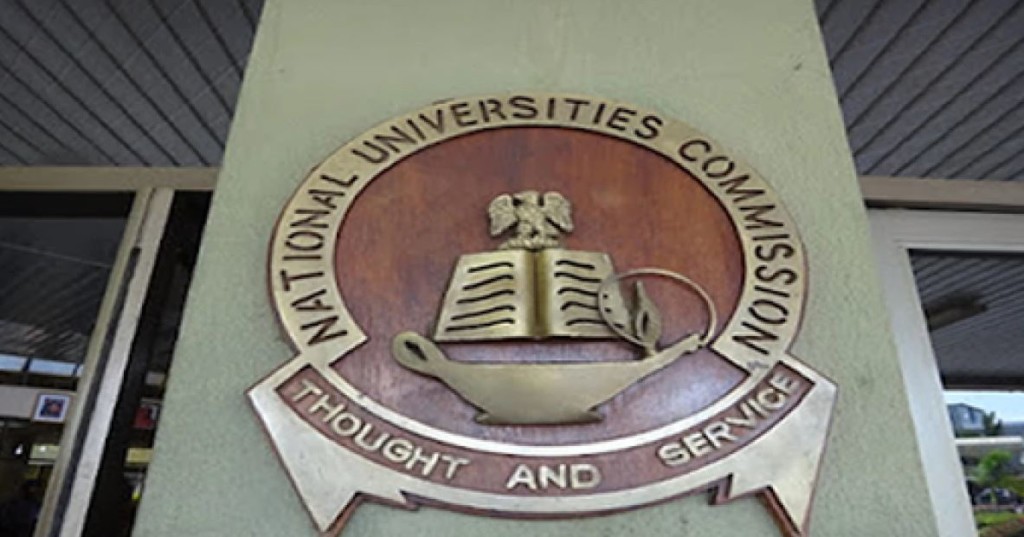

Here’s a polished 1,000‑word essay‑style blog post for your WordPress site on the NUC’s new 70% accreditation benchmark, seamlessly sourced from Nigerian news outlets:
The National Universities Commission has introduced a sweeping measure that promises to reshape the academic landscape across Nigeria. In a firm directive issued earlier this year, the NUC announced that all federal universities must now achieve a minimum 70% score in each of four critical accreditation areas—Academic Matters, Staffing, Physical Facilities, and Library Resources—or risk serious sanctions, including possible withdrawal of programme approval.
At the heart of this initiative is the Acting Executive Secretary, Chris Maiyaki, who described the rating system as more than just bureaucratic oversight—it represents “a quality assurance cradle” whose oversight is necessary to preserve standards. He bluntly warned that any university failing to meet the threshold would face sanctions, a message made plain during a high‑profile meeting with scholars from King’s College London.
Nigeria’s higher education system has expanded dramatically: the country now hosts 61 federal, 63 state, and 149 private universities. But this growth has come with problems—uneven quality, occasional diploma mills, chronic underfunding, and anger over repeated accreditation failures. The 70% benchmark and the related moratorium placed on new private university licenses aim to curb substandard programmes and usher in accountability.
Increasingly, accreditation reviews hinge on four major institutional pillars. The first, Academic Matters, probes the modernity and relevance of curricula, the qualifications and numbers of faculty, and whether learning outcomes are clearly defined and measurable. Secondly, Staffing assesses the adequacy of both teaching and non‑teaching personnel in relation to university goals and student support systems.
Physical Facilities, the third pillar, spotlights the infrastructure universities are often eager to embellish with glossy brochures—classrooms, labs, lecture theatres, ICT resources, power stability, and serviceable utilities all come under inspection. Finally, the Library Resources category evaluates the depth and breadth of collections, both physical and digital, and checks whether students and researchers have access to quality journals and research networks.
Though many institutions excel in specific areas, NUC has declared that score deficiencies in any one category—even if the other three show competence—will result in full accreditation denial or restricted status. Paint figurative embellishments over empty laboratories are no longer tolerated. Maiyaki cautioned openly against any attempts at falsifying data or embellishing realities for visiting evaluators: “If you cheat during visitation, you lose accreditation” .
While the 70% accreditation requirement stirred discussions, it was dwarfed by a larger storm: the rollout of the Core Curriculum Minimum Academic Standards (CCMAS). Under this policy, the NUC claims 70% of every course curriculum, leaving only 30% to universities themselves. ASUU erupted in opposition, denouncing the model as a “nightmarish,” top‑down attack on academic freedom and institutional autonomy. Their President, Prof. Emmanuel Osodeke, said the policy turned universities into spectators in their own processes and eroded senate authority—potentially watering down key disciplines like engineering mathematics and chemistry.
The NUC rejected the criticism, pointing out that CCMAS was a result of inclusive consultations involving hundreds of academics, private sector input via Nigerian Economic Summit Group (NESG), and guidance from professional bodies. Deputy Executive Secretary Dr. Noel Saliu asserted that while uniformity was not the intent, a consistent baseline was essential for global competitiveness.
To reinforce its agenda, the federal government announced a one‑year freeze on new private university licenses, beginning in February 2025. In parallel, application and process fees were dramatically increased—up to ₦5 million and ₦25 million respectively —to discourage uninformed expansion. Approved licenses will now be reserved for institutions equipped to deliver quality education, aligning with the new benchmark.
One unexpected beneficiary of the changes is the Federal University, Lokoja (FUL). Since its inception in 2011, FUL has seen 34 out of 42 programmes fully accredited, with the remainder on interim approval. An accreditation report for one programme showed 83.2% overall—well above the requirement, with notable scores in Academic Matters (89.2%), Staffing (83%), Facilities (77.8%), and Library Resources (77.8%). FUL managed this by making deliberate investments in its faculty, facilities, and library, thus offering a blueprint other universities can follow.
Despite the optimism surrounding NUC’s reforms, formidable challenges remain. Many established institutions struggle with infrastructure decay, staffing shortfalls, erratic funding, and aging library resources—challenges that may thwart efforts to reach the 70% threshold. Given austere state budgets and infrequent federal allocations, achieving consistency is no small feat.
ASUU argues that the formalization of CCMAS risks rising tensions, as it infringes on senate powers, potentially generating pushback that could lead to more strikes—further delaying educational progress. Students, already marred by frequent disruptions, could suffer setbacks—not just in interruption of studies but also in their employability, as proposed reforms threaten to weaken foundational coursework.
Experts believe that the pathway forward lies in collaboration. Universities, ASUU, NUC, and funding bodies must jointly define evaluation criteria, implement incremental funding to upgrade facilities, and expand academic staff. Clear metrics for judging readiness before licence approval are essential, along with transparent publication of accreditation results to foster accountability and public awareness.
NUC’s bold 70% accreditation threshold reflects a wider recognition that mass expansion must be matched by quality assurance. By codifying standards in academic content, human resources, infrastructure, and library provision, the commission is effectively setting a national bar for institutional excellence.
This move marks a significant milestone in the regulatory journey of Nigerian universities—where the promise of free, quality education meets the practical urgency of standards, structure, and sustainability. Whether federal universities can recalibrate fast enough, and whether the academic community will partner with regulation rather than resist it, will determine if Nigeria’s higher education system becomes a global success story—or stagnates in complacency.
Your views matter: Will this new accreditation threshold strike the right balance between quality and autonomy, or will it strengthen regulatory oversight at the cost of academic independence? Share your thoughts below.